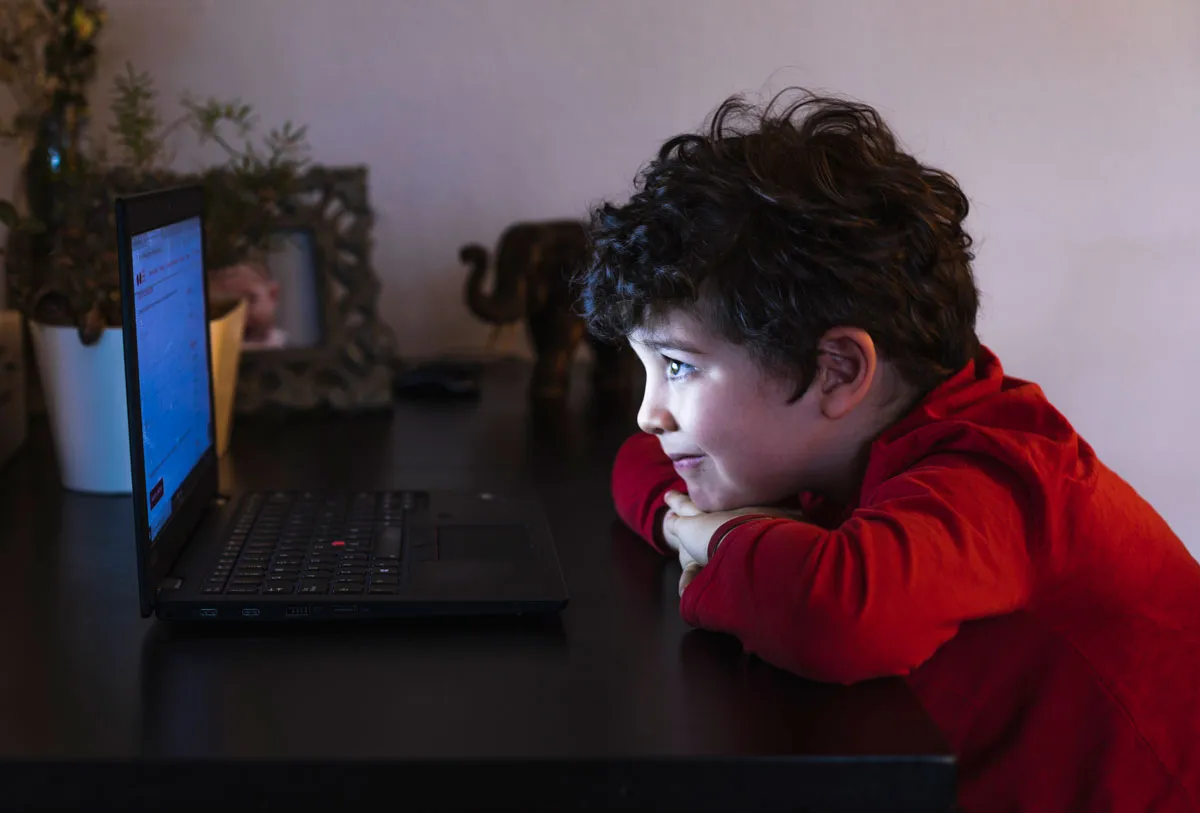Increasing time spent indoors during the COVID-19 pandemic may have caused a significant rise in childhood short-sightedness (known as myopia), according to a new Hong Kong study.
Published in the British Journal of Ophthalmology, the findings were based on the ongoing Hong Kong Children Eye Study, which continually researches the eye conditions of 6 to 8-year-olds.
The study found that one in five (19.5 per cent) of the 709 children recruited at the start of the pandemic (between December 2019 to January 2020) developed short-sightedness over the course of eight months.
The overall estimated one-year incidence of short-sightedness for COVID-era six-year-olds was 28 per cent – much higher than the 17 per cent found in children studied pre-pandemic.
The researchers note that these changes coincided with a reduction in the time the children spent outdoors – from around an hour and 15 minutes to around 24 minutes per day. Screentime among the children drastically increased during this period also, from 2.5 hours a day, to 7 hours.
The authors highlight that this data relied on questionnaires, which could impact the research's accuracy. Also, as the localised study was only observational, a global causal link between time spent indoors and short-sightedness couldn’t be firmly identified.
However, the researchers conclude: “Despite all these insurmountable study limitations, our initial results still show an alarming myopia progression that warrants appropriate remedial action.”
Read more about the science of screentime:
- Screen time can delay development in children
- The benefits of video games: why screen time isn’t always bad
- Excessive screen-time linked to changes in preschoolers’ brains
Commenting on recent research on this topic, James S Wolffsohn, professor of optometry at Aston University told BBC Science Focus: “During the epidemic, lifestyles have changed such as the amount of time spent viewing digital screens, homeschooling and the duration of time spent outdoors (which has been associated with increased myopia), but not in a consistent way.
“However, at least nine peer-reviewed published studies – not including this new Hong Kong study – have identified an increase in myopia progression during the pandemic.
“One study found this myopic progression was reversed partially after lockdown, suggesting that both eye focus spasm and structural changes contributed to this accelerated rate.”
In a bid to control the spread of coronavirus, over 180 countries closed schools at some point by September 2020, a move impacting one billion learners (80 per cent of the world’s students).

During the coronavirus lockdowns last year, the UK observed a surge in screen time. In April 2020, people spent an average of six hours and 25 minutes each day watching TV and online video content, according to Ofcom figures.
Could people in the UK – especially children – also see an increase in short-sightedness due to this time indoors? Currently, there is not enough evidence to say either way.
“With respect to myopia, there are currently no published reports that replicate the findings of the [Hong Kong] study in relation to lockdown measures in the UK,” Dr Paramdeep Bilkhu, clinical adviser at the UK’s College of Optometrists told BBC Science Focus.
“But it is recognised that staying indoors, rather than any specific near activity such as using a screen, may contribute toward myopia development."
He added: "There has been a general worldwide trend of increasing prevalence of myopia, and this study shows the importance of getting outdoors. Not only is it good for general health, but it is shown to help reduce the onset of myopia and potentially the degree or rate of myopia progression.”
Can time in front of screens cause short-sightedness?
Although other factors can influence your risk of myopia, your lifestyle can be a major factor.
“While short-sightedness (myopia) can occur due to genetic abnormalities, and there are genetic factors that increase an individual’s susceptibility to myopia, the natural biological process by which the eye grows to give clear distance vision is driven by the visual environment,” explains Wolffsohn.
“Lifestyle influences on the visual environment causing changes in the profile of light reaching the light-sensitive layer of the eye (the retina) can disrupt this process and the eye grows past the optimum length for clear distance vision, resulting in myopia.”
However, Bilkhu claims there is no evidence to suggest screens will cause any damage to the eyes. But prolonged near activities like using a screen or laptop can cause the eyes to feel uncomfortable and tired.
“Like any muscle in the body, eye muscles that control eye movement and fine-tune focus will become fatigued,” he said.
To reduce such fatigue, Bilkhu recommends taking regular breaks. “A useful reminder is the 20/20/20 rule, where one should look away in the distance (around 20 feet [6m]) every 20 minutes for 20 seconds, and blink regularly to keep the eyes comfortable.”
About our experts
Dr Paramdeep Bilkhu is a therapeutic optometrist and postdoctoral researcher at Aston University. He is also a clinical adviser for the College of Optometrists. Bilkhu's research has been published in the likes of journals Optometry and Vision Science and Optometry in Practice.
Prof James S Wolffsohn is Associate Pro-Vice Chancellor at Aston University. He has published over 215 peer-reviewed academic papers on the topic of optometry.